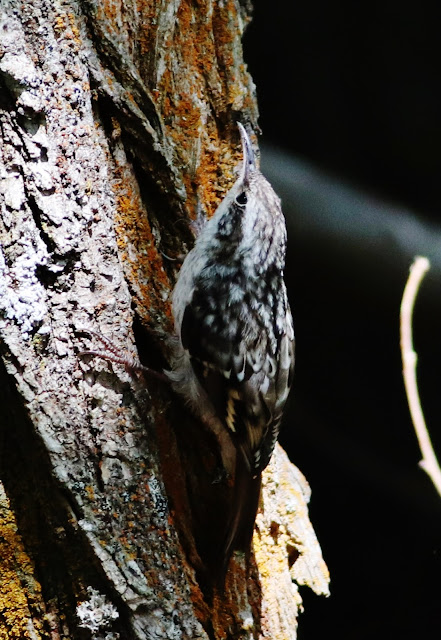
 The short-toed treecreeper (Certhia brachydactyla) is a small passerine bird found in woodlands through much of the warmer regions of Europe and into north Africa. It has a generally more southerly distribution than the other European treecreeper species, the common treecreeper, with which it is easily confused where they both occur. The short-toed treecreeper tends to prefer deciduous trees and lower altitudes than its relative in these overlap areas. Although mainly sedentary, vagrants have occurred outside the breeding range.
The short-toed treecreeper (Certhia brachydactyla) is a small passerine bird found in woodlands through much of the warmer regions of Europe and into north Africa. It has a generally more southerly distribution than the other European treecreeper species, the common treecreeper, with which it is easily confused where they both occur. The short-toed treecreeper tends to prefer deciduous trees and lower altitudes than its relative in these overlap areas. Although mainly sedentary, vagrants have occurred outside the breeding range.
The short-toed treecreeper is one of a group of four very similar Holarctic treecreepers, including the closely related North American brown creepers, and has five subspecies differing in appearance and song. Like other treecreepers, the short-toed is inconspicuously plumaged brown above and whitish below, and has a curved bill and stiff tail feathers. It is a resident in woodlands throughout its range, and nests in tree crevices or behind bark flakes, laying about six eggs. This common, unwary, but inconspicuous species feeds mainly on insects which are picked from the tree trunk as the treecreeper ascends with short hops.
The Short-toed nests in tree crevices or behind bark flakes. Old woodpecker nests, crevices in buildings or walls, and artificial nest boxes or flaps are also used.

 The nest has an often bulky base of twigs, pine needles, grass or bark, and a lining of finer material such as feathers, wool, moss, lichen or spider web. The eggs are laid between April and mid June (typical clutch 5–7 eggs); they are white with purple-red blotches, 15.6 x 12.2 mm (0.6 x 0.5 in) in size. The eggs are incubated by the female alone for 13 – 15 days until the altricial downy chicks hatch; they are then fed by both parents, but brooded by the female alone, for a further 15 – 18 days to fledging. This species often raises a second brood. The male starts constructing a new nest while the female is still feeding the first brood, and when the chicks are 10–12 days old, he takes over feeding duties while the female completes the new nest.
The nest has an often bulky base of twigs, pine needles, grass or bark, and a lining of finer material such as feathers, wool, moss, lichen or spider web. The eggs are laid between April and mid June (typical clutch 5–7 eggs); they are white with purple-red blotches, 15.6 x 12.2 mm (0.6 x 0.5 in) in size. The eggs are incubated by the female alone for 13 – 15 days until the altricial downy chicks hatch; they are then fed by both parents, but brooded by the female alone, for a further 15 – 18 days to fledging. This species often raises a second brood. The male starts constructing a new nest while the female is still feeding the first brood, and when the chicks are 10–12 days old, he takes over feeding duties while the female completes the new nest.
A Spanish study suggests that forest fragmentation adversely affects the numbers of short-toed treecreepers present, as is also the case with the common treecreeper. Species that depend on relatively scarce resources, such as tree trunks, only occupy the larger forests, whereas those such as tits and common firecrests that exploit abundant, ubiquitous resources are distributed uniformly through woodlands of all sizes
The short-toed treecreeper typically seeks invertebrate food on tree trunks, starting near the tree base and spiralling its way up using its stiff tail feathers for support. Unlike a nuthatch, it does not come down trees head first, but flies to the base of another nearby tree. It uses its long thin bill to extract insects and spiders from crevices in the bark. Although normally found on trees, it will occasionally feed on walls or bare ground, or amongst fallen pine needles. It may add some seeds to its diet in the colder months. From Wikipedia, the free encyclopedia
Photos Troodos by George Konstantinou







No comments:
Post a Comment